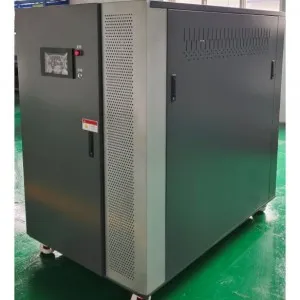- Afrikaans
- Albanian
- Amharic
- Arabic
- Armenian
- Azerbaijani
- Basque
- Belarusian
- Bengali
- Bosnian
- Bulgarian
- Catalan
- Cebuano
- China
- China (Taiwan)
- Corsican
- Croatian
- Czech
- Danish
- Dutch
- English
- Esperanto
- Estonian
- Finnish
- French
- Frisian
- Galician
- Georgian
- German
- Greek
- Gujarati
- Haitian Creole
- hausa
- hawaiian
- Hebrew
- Hindi
- Miao
- Hungarian
- Icelandic
- igbo
- Indonesian
- irish
- Italian
- Japanese
- Javanese
- Kannada
- kazakh
- Khmer
- Rwandese
- Korean
- Kurdish
- Kyrgyz
- Lao
- Latin
- Latvian
- Lithuanian
- Luxembourgish
- Macedonian
- Malgashi
- Malay
- Malayalam
- Maltese
- Maori
- Marathi
- Mongolian
- Myanmar
- Nepali
- Norwegian
- Norwegian
- Occitan
- Pashto
- Persian
- Polish
- Portuguese
- Punjabi
- Romanian
- Russian
- Samoan
- Scottish Gaelic
- Serbian
- Sesotho
- Shona
- Sindhi
- Sinhala
- Slovak
- Slovenian
- Somali
- Spanish
- Sundanese
- Swahili
- Swedish
- Tagalog
- Tajik
- Tamil
- Tatar
- Telugu
- Thai
- Turkish
- Turkmen
- Ukrainian
- Urdu
- Uighur
- Uzbek
- Vietnamese
- Welsh
- Bantu
- Yiddish
- Yoruba
- Zulu
Oct . 12, 2024 12:31 Back to list
Exploring the Properties and Applications of Ductile Iron in Casting Techniques
Casting Ductile Iron Properties, Advantages, and Applications
Ductile iron, also known as nodular cast iron or spheroidal graphite iron, has gained significant recognition in the metalworking and manufacturing industries due to its remarkable mechanical properties and versatility. It is primarily produced through the casting process, which allows for the formation of intricate shapes and components that meet various engineering requirements. This article delves into the casting of ductile iron, exploring its properties, advantages, and common applications.
Properties of Ductile Iron
Ductile iron is characterized by its unique microstructure, which contains graphite in the form of spherical nodules rather than flakes, as found in traditional gray cast iron. This structure significantly enhances the material's tensile strength, ductility, and impact resistance. The key properties of ductile iron include
1. High Strength Ductile iron has a tensile strength that can exceed 1000 MPa, making it suitable for various applications that require high mechanical performance. 2. Excellent Ductility Unlike brittle materials, ductile iron can deform under stress without fracturing, allowing it to absorb energy and prevent catastrophic failure. 3. Good Wear Resistance The material's resistance to wear and abrasion makes it ideal for applications subjected to heavy use. 4. Corrosion Resistance Ductile iron, particularly when used with protective coatings, demonstrates good resistance to corrosion, thereby extending the lifespan of components.
Advantages of Casting Ductile Iron
The casting process for ductile iron provides several advantages compared to other manufacturing methods
1. Cost-Effectiveness The casting process allows for the production of complex shapes in large quantities, reducing manufacturing costs. This efficiency is particularly beneficial for producing components in various industries, including automotive and construction. 2. Design Flexibility Ductile iron can be cast into intricate designs that might be difficult or impossible to achieve with other materials or manufacturing techniques. This flexibility enables engineers to optimize component geometry for performance and weight savings.
3. Rapid Production The casting process can produce multiple parts simultaneously, significantly speeding up production times. This rapid turnaround is crucial for industries that require quick delivery of components.
casting ductile iron

4. Recyclability Ductile iron can be recycled, which is an essential consideration for environmentally sustainable manufacturing processes. Scrap iron can be melted down and reused, minimizing waste and resource consumption.
Common Applications
Ductile iron's exceptional properties make it suitable for a wide range of applications across various industries
1. Automotive Components Ductile iron is widely used in the automotive industry for producing crankshafts, transmission cases, and suspension components. Its strength and durability contribute to the performance and safety of vehicles.
2. Pipelines and Valves The material's corrosion resistance and ability to withstand high pressures make ductile iron ideal for water and gas pipelines, as well as valves and fittings in municipal infrastructure.
3. Heavy Machinery In heavy equipment and machinery, ductile iron components, such as housings, frames, and gears, provide the necessary strength and toughness to handle demanding operating conditions.
4. Construction Products Ductile iron is commonly used in manhole covers, drain covers, and other construction-related products due to its ability to withstand heavy loads and resist wear over time.
Conclusion
Casting ductile iron has established itself as a vital process in modern manufacturing, owing to the material's superior mechanical properties and the advantages offered by casting techniques. As industries continue to evolve, the demand for durable and versatile materials like ductile iron is expected to grow. Engineers and manufacturers will increasingly rely on ductile iron for producing innovative solutions that meet the challenges of a dynamic market. The continued exploration of its properties and applications ensures that ductile iron will remain a cornerstone material in many sectors for years to come.
-
8mm Thin-Walled Cast Steel Manhole Cover Pallet Bottom Ring | Durable
NewsAug.04,2025
-
Premium Cast Iron Water Main Pipe: Durable, Corrosion-Resistant
NewsAug.03,2025
-
Durable Cast Iron Water Mains | AI-Optimized Systems
NewsAug.02,2025
-
High-Efficiency Propane Boiler for Baseboard Heat | Save Energy
NewsAug.01,2025
-
Premium Source Suppliers for Various Gray Iron Castings
NewsJul.31,2025
-
Durable Cast Iron Water Main Pipes | Long-Lasting
NewsJul.31,2025


